LinkedIn has evolved far beyond a platform for job seekers and recruiters. It has become a formidable arena for businesses to connect, engage, and thrive through LinkedIn advertising. However, in this ever-evolving digital landscape, success is often a result of knowing not just what to do, but also what to avoid. It’s crucial to tread carefully, avoiding common mistakes that can hinder our progress and limit the effectiveness of our campaigns.
Here are 10 common mistakes that should be avoided to run a successful LinkedIn ad campaign:
1) Turn Off Audience Expansion
One mistake that deserves attention is the often misunderstood feature known as “Audience Expansion.” While enticing for its potential to broaden your reach, this can sometimes turn out to be a double-edged sword.
Imagine you’ve meticulously crafted a set of specific target parameters for your LinkedIn ad campaign. You’ve identified the perfect audience that aligns with your product or service. Turning on Audience Expansion might seem like the logical next step to cast a wider net, but here’s the catch – it can inadvertently dilute the precision of your campaign’s focus.
Picture this scenario: Your primary target audience consists of experienced marketing professionals in the tech industry. They’re the most likely to convert and engage with your sponsored content. But with Audience Expansion enabled, LinkedIn might start showing your ads to individuals who only vaguely resemble your ideal audience. Suddenly, your ad is reaching people in unrelated fields or those with minimal experience in marketing. While this might boost your overall impressions, it dilutes the chances of meaningful engagement and conversions.
By turning off Audience Expansion, you’re essentially telling LinkedIn, “Stick to the plan!” Your campaign remains laser-focused on the audience you’ve carefully selected. It’s like having a precision-guided missile rather than a shotgun approach – you’re more likely to hit your intended target with greater accuracy.
Furthermore, keeping Audience Expansion off also helps in preserving your budget. With a focused campaign, you’re spending your money more efficiently by reaching the people who are most likely to convert. It’s a strategic move that ensures you’re not wasting resources on audiences that may have little interest in your company page or offerings.
In essence, turning off Audience Expansion is a strategy that places quality over quantity. While the allure of a larger reach is tempting, it’s essential to remember that precision matters in the LinkedIn advertising world.
2) Turn Off LinkedIn Audience Network (LAN)
One often underestimated blunder worth discussing is the use of LinkedIn Audience Network (LAN). This feature, while promising to extend your reach to partner apps and websites, can sometimes lead to unexpected consequences, like your ad budget slipping through the cracks.
Here’s how it works: By opting for LAN, you’re opening the doors for your ads to be displayed on partner apps and websites affiliated with LinkedIn. While this might seem like a shortcut to expanding your ad’s reach, it can often end up with the majority of your budget being spent outside the trusted confines of LinkedIn’s platform.
Why is this ad format so problematic? Well, for one, it limits your ability to control the context in which your ads appear and who gets to see them. Your carefully crafted LinkedIn ad might pop up in an unrelated mobile game or on a random news website, far removed from the professional environment you intended. This not only dilutes your message but also risks associating your brand with irrelevant or potentially unfavourable content.
Turning off the LinkedIn Audience Network is akin to maintaining a firm grip on the steering wheel of your campaign. It ensures that your ad spending remains concentrated on LinkedIn’s platform, where your target audience typically resides. In turn, it facilitates more precise ad targeting, increasing the chances of your ad reaching the right people at the right time.
3) Set Up Conversion Tracking
One cardinal mistake that advertisers often make is neglecting the invaluable tool of Conversion Tracking. It’s not just a box to tick; it’s your compass, and here’s why.
Imagine you’re embarking on a cross-country road trip. Before you hit the road, you’d want a way to know if you’re heading in the right direction, wouldn’t you? In the LinkedIn advertising landscape, setting up Conversion Tracking is precisely that crucial directional tool. It’s your means of gauging whether your campaigns lead you closer to your goals or veering off course.
So, what exactly is Conversion Tracking? It’s like placing breadcrumbs along your digital marketing journey. You mark specific milestones or actions on your website that indicate user engagement or conversion, such as key page views like pricing and contact pages, form submissions, or call bookings. Every time a LinkedIn user clicks on your ad and completes one of these actions, it’s like picking up a breadcrumb, leaving a trail of their interaction with your brand.
To set up Conversion Tracking effectively, you must create a URL redirect for each of these pivotal actions. This seemingly small step enables you to gather a treasure trove of data on how users engage with other platforms on your site after clicking on your LinkedIn ads. You can see if they proceed to explore your pricing options, fill out a contact form, or book a call – all of which are vital indicators of genuine interest.
Now, why is this data so indispensable? It’s because it empowers you with the insights needed to measure the effectiveness of your marketing campaigns. You’re no longer navigating blindly through the digital landscape; instead, you’re equipped with a dashboard that reveals where your efforts are paying off and where they may need some fine-tuning.
Implementing Conversion Tracking isn’t just a recommended practice; it’s the cornerstone of a successful LinkedIn advertising strategy. It transforms your campaigns from a shot in the dark to a data-driven journey, where you can confidently steer towards your marketing objectives.
4) Create Website Retargeting Buckets
Imagine your website as a bustling marketplace. Each visitor represents a potential customer, but they are not all ready to make a purchase on their first visit. Some might be window shopping, while others are just gathering information. This is where Website Retargeting Buckets come into play.
These buckets are essentially like the various stages of a sales funnel, each tailored to a different timeframe – 30, 90, and 180 days. They capture the attention of website visitors who have engaged with your website in some way but haven’t taken a desired action, such as making a purchase or filling out a contact form. It’s like extending a warm invitation to those who’ve shown interest but need a little nudge to convert.
Here’s the thing: Website visit audiences only start collecting data once you’ve set up these buckets. They aren’t retroactive. So, if you’ve neglected this step, you’re essentially missing out on valuable data and opportunities to re-engage with potential customers.
Now, picture your website’s tracking pixel as a watchful guardian. It quietly observes visitor behaviour and adds them to the appropriate bucket based on their actions. However, it requires attention. You need to check your pixel regularly to ensure it’s functioning correctly – a critical step in accurate data collection.
But why is this data so crucial? It allows you to tailor your LinkedIn ad campaigns to your audience’s specific interests and behaviours. For instance, those who visited your website 30 days ago may need a gentle reminder about your product or service, while those who’ve been there for 180 days might require a different approach to rekindle their interest.
Website Retargeting Buckets empower you to execute precision marketing. You can deliver ad types and ads that resonate with where your potential customers are in their buying journey, increasing the likelihood of conversion. It’s like offering the right ad type or product to the right person at the right time – a winning strategy for any marketer.
5) Monitor Your Ad Frequency
Ad fatigue occurs when your target audience sees the same ad too frequently, and it can be a silent killer for your campaign’s effectiveness. It might lead to diminishing returns, as viewers become desensitised to your message, and the ad loses its impact.
So, what’s the remedy? It’s as simple as switching your ad settings to “rotate ads evenly” when you hit that frequency threshold. This strategy is particularly valuable for smaller retargeting audiences or when you’re dealing with cold Account-Based Marketing (ABM) lists with substantial budgets.
Here’s why it works: By rotating your ads evenly, you’re offering a fresh and varied content experience to your audience. Instead of repetitively using conversation ads showing the same sponsored inMail ad, you introduce diversity into the mix of message ads.
This approach to ad formats not only prevents ad fatigue but also maintains the curiosity and engagement of your audience. It ensures that your LinkedIn ads remain effective and continue to capture attention, even in extended campaigns.
But why does this matter? Because in the competitive world of digital advertising, attention is a precious commodity. By keeping ad copy and content fresh and avoiding ad fatigue, you increase the chances of your audience noticing, engaging with, and acting upon your ad image and message.
6) Set up ‘Last Touch’ Conversion Tracking
Imagine your LinkedIn ad campaign as a series of stepping stones leading potential customers towards a desired action, like filling out a form or booking a call. Each step represents a touchpoint – an interaction with your campaign. Now, to determine which of these touchpoints was the most influential in converting a prospect, you need the right tracking tools. That’s where “Last Touch” Conversion Tracking comes into play.
You should consider two essential methods: “Last touch each campaign” and “Last touch last campaign.”
Last touch each campaign is like giving credit where credit is due to every campaign a prospect interacted with before converting. It acknowledges that each step along the way played a role in guiding them to that final conversion.
Last touch last campaign credits only the most recent campaign a prospect engaged with just before converting.
Here’s why using both methods can be a game-changer for your LinkedIn advertising strategy: Consider a scenario where a prospect encounters multiple campaigns from your brand over time. They might have clicked on an ad a few weeks ago and then engaged with another one before finally converting. Without comprehensive tracking, you might miss the bigger picture.
Using both “Last touch each campaign” and “Last touch last campaign” enables you to piece together the entire conversion journey. It provides a holistic view of your campaign’s effectiveness by acknowledging all touchpoints and highlighting the most influential ones. This way, you can see the role each campaign played in nurturing the prospect and nudging them towards that coveted conversion.
Furthermore, this dual-tracking method offers invaluable insights into which campaigns are excelling and which might need optimisation. It allows you to allocate resources wisely, focusing on what works and making data-driven decisions to enhance your overall LinkedIn advertising strategy.
7) Use Evergreen Strategies
Keeping your campaigns fresh and engaging is a top priority. However, one mistake that advertisers often make is continuously chasing the latest trends and neglecting the power of Evergreen Strategies. It’s like trying to reinvent the wheel when sometimes, the classic design works just as well, if not better.
Instead of constantly reinventing the wheel, Evergreen Strategies involve creating content that remains relevant and effective over an extended period.
For instance, consider a 90-day retargeting campaign. Instead of churning out a barrage of new ads every few days, you can build a set of dynamic ads, that align with the 90-day frequency and set them to “rotate evenly.” It creates an evergreen campaign that consistently provides a fresh content experience for your prospects.
Here’s the magic of this approach: It allows you to maintain engagement and interest without the exhausting demand for constant content creation. It’s like having a library of well-crafted ads that continue to engage and convert your audience over time.
Evergreen Strategies also offer several advantages:
- Consistency: They provide a consistent brand message and experience for your audience, reinforcing your brand identity.
- Cost-Efficiency: Instead of allocating significant resources to create new ads regularly, you can focus on optimising and fine-tuning your evergreen content.
- Audience Building: Over time, you can accumulate a library of ads that cater to various segments of your audience, creating a powerful arsenal of content.
- Conversion Optimisation: By analysing the performance of your evergreen content, you can make data-driven decisions to enhance your campaign’s effectiveness.
By creating relevant and effective content over time, you will provide a consistently fresh experience for your prospects while maintaining a cost-effective and efficient campaign.
8) Attach All Conversion Events to Every Campaign
Think of your LinkedIn ad campaign as a complex puzzle with many ways to enter and various paths to explore. Each person looking at your ads is like a puzzle solver, and they each approach it differently. Some might start at the beginning and follow a straight line, while others might go off the beaten path, checking out different parts of your offering before making a decision.
The problem is assuming that everyone will follow the same path, which can lead to missed opportunities and incomplete data. You can’t expect everyone to take the same route through a maze when, in reality, people have their own ways of getting through.
That’s where attaching all conversion events to every campaign comes in. It’s like putting up signs at every possible turn, ensuring that no matter which way someone goes, we keep track of what they do and whether they complete the actions we want them to take.
Here are a few reasons why this approach is so crucial:
- User Behaviour Variability: Prospects exhibit diverse behaviours when interacting with your ads and website. By attaching all conversion events to every campaign, you accommodate this variability and ensure no valuable conversion data slips through the cracks.
- Comprehensive Data: LinkedIn advertising success hinges on data-driven decisions. To make informed choices about your campaigns, you need comprehensive data that reflects how users engage with your content. Attaching all conversion events guarantees that you capture a holistic view of user interactions.
- Optimisation Insights: When you have a complete dataset, you can identify patterns and trends in user behaviour. It enables you to optimise your campaigns more effectively, focusing on what’s working and addressing any bottlenecks or pain points.
- Customised Remarketing: With a thorough understanding of user behaviour, you can create personalised remarketing campaigns that cater to specific paths users have taken. It can significantly boost conversion rates.
9) Be Cautious with HubSpot Conversion Tracking
One common mistake to be mindful of is relying too heavily on HubSpot for conversion tracking. While HubSpot is a robust tool for various marketing activities, it might not always be the most reliable choice for LinkedIn conversion tracking.
LinkedIn has its own set of conversion tracking tools that are finely tuned to capture user interactions accurately within its platform. HubSpot, although versatile, may not always seamlessly sync with these LinkedIn-specific tracking mechanisms.
The potential drawback here is that relying solely on HubSpot could result in missed opportunities and incomplete data when tracking LinkedIn conversions. It’s like using a universal remote control to operate a complex piece of machinery when a specialised tool would do the job more effectively.
You should leverage the platform’s built-in conversion tracking tools to ensure precise and comprehensive conversion tracking on LinkedIn. These tools are tailor-made for LinkedIn’s environment and optimised to capture data accurately. Additionally, you can explore third-party tracking tools known for their precision in conjunction with LinkedIn advertising.
By being cautious with HubSpot conversion tracking, you’re not dismissing its capabilities but recognising the importance of choosing the right tool for the job. It’s like having a tool belt with various specialised tools; you pick the one best suited for each task.
While HubSpot excels in many marketing areas, LinkedIn’s unique ecosystem benefits from tools finely tuned to its environment. Leveraging LinkedIn’s native tracking tools or trusted third-party options can help ensure you capture all conversions accurately, providing you with the data needed to make informed decisions and optimise your LinkedIn ad campaigns effectively.
10) Strategy First, Tracking Second
When it comes to LinkedIn advertising, success hinges on a well-thought-out strategy. A common mistake to avoid is crafting your strategies based on what’s convenient to track rather than aligning your tracking with your strategic objectives.
Think of your LinkedIn ad campaign as a journey. Your strategy and ad description are like the roadmap that guides you toward achieving your marketing goals. It’s about defining who your target audience is, what message resonates with them, and how you plan to engage them effectively.
Now, imagine if you were planning a road trip. You wouldn’t choose your destination based on where the GPS signals are the strongest; you’d select a place that aligns with your interests and objectives. Similarly, your strategy and audience targeting criteria should dictate your campaign’s direction in LinkedIn advertising.
Constructing your strategy around what’s easy to track can be counterproductive. It’s like choosing your road trip destinations solely based on the availability of GPS coverage, limiting your adventure to places that might not truly inspire you. Your strategic choices should not be constrained by tracking limitations.
Instead, once you’ve defined your strategy and objectives, the next step is to figure out how to track the success of your campaigns. LinkedIn provides a range of tracking capabilities tailored to its platform, and these should be your first line of defence for measuring campaign performance.
However, it’s essential to recognise that no tracking solution is one-size-fits-all. This is where third-party tracking solutions can play a crucial role. They can help bridge the gap between your strategic choices and the tracking capabilities available.
For instance, if your strategy involves complex multi-touchpoint campaigns, third-party solutions can provide a holistic view of the customer journey, offering insights that LinkedIn’s native tracking might not capture as comprehensively.
It’s paramount to prioritise strategy over tracking. Your strategic choices should be driven by your goals and your audience, not by the limitations of tracking tools. Use LinkedIn’s tracking capabilities as your foundation, and supplement them with third-party solutions where needed to get the complete picture.
Conclusion
A successful LinkedIn ad campaign requires a delicate balance between strategy and tactics. While you must navigate the intricacies of LinkedIn’s platform and leverage its tracking capabilities, it’s equally vital not to let tracking limitations dictate your strategic choices. Craft a robust strategy that aligns with your objectives and audience, and then harness the power of LinkedIn’s tracking tools and, when necessary, supplement them with third-party solutions. By doing so, you’ll avoid the common pitfalls and position yourself for LinkedIn advertising success, where your budget is invested with precision, every campaign is dynamic, and every conversion is captured, leading to meaningful results and sustainable growth.

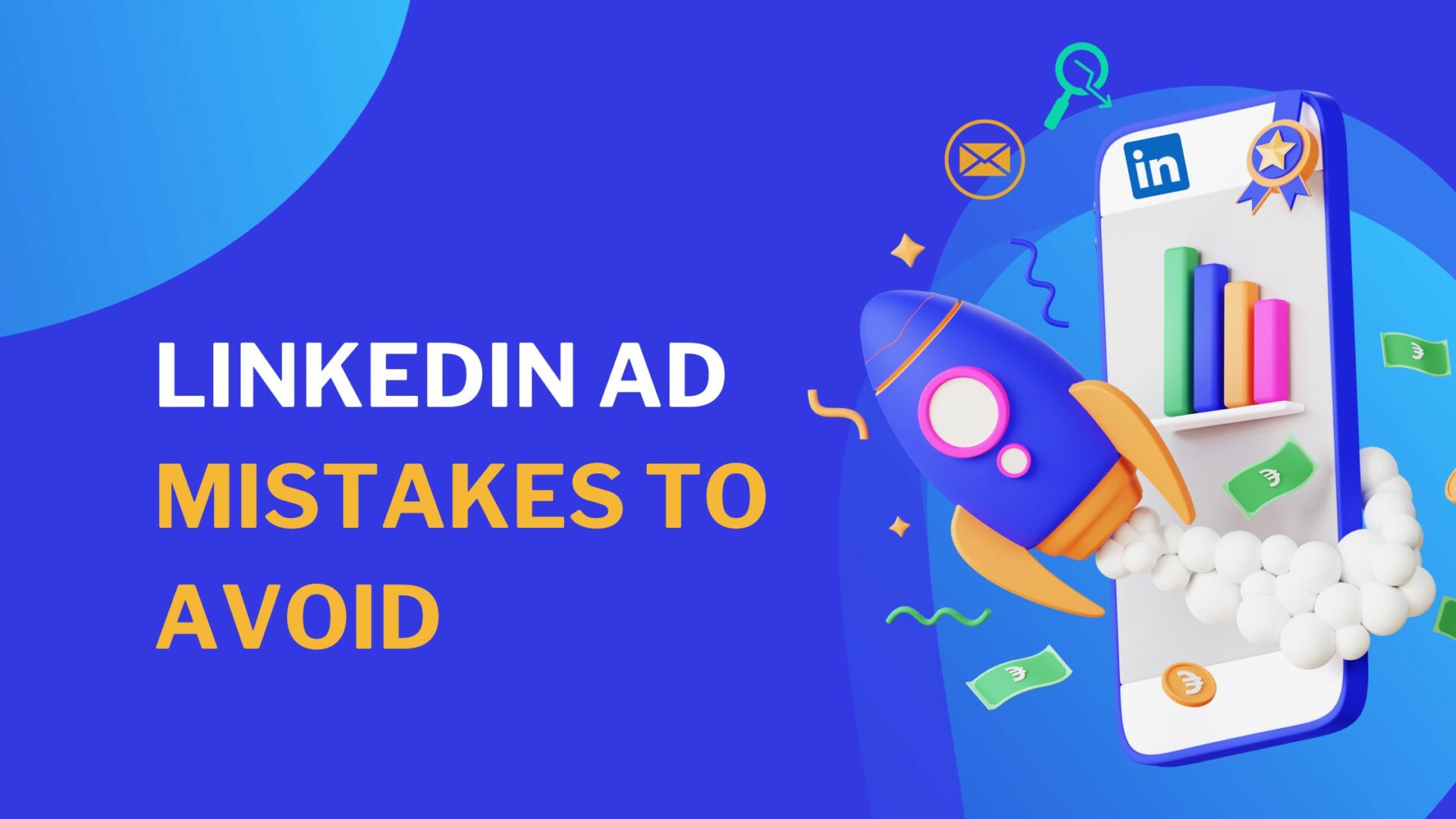
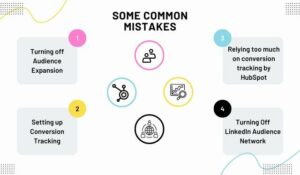
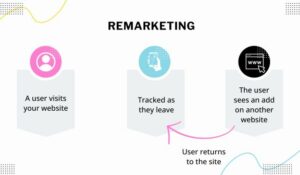

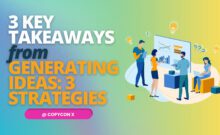
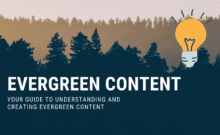

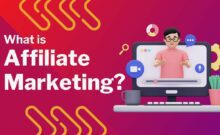
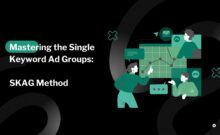


Leave a Comment